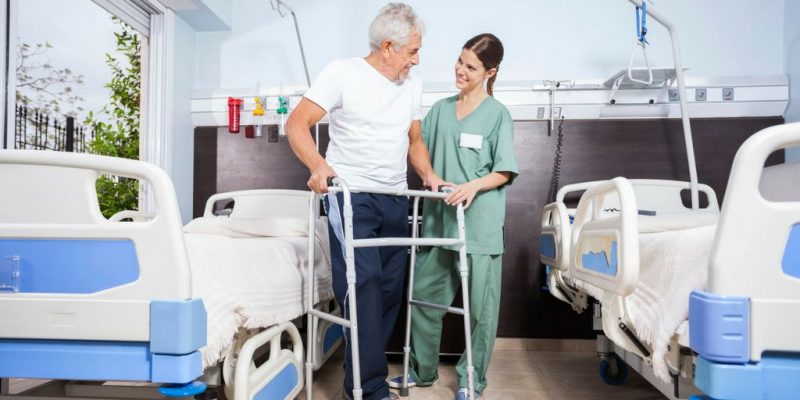Without gravity there would be no falls. Falls are a major cause of accidental trauma throughout one’s life. Often falls are multifactorial. Prevention of falls can pay significant dividends by reducing healthcare costs, disability and mortality. Fall prevention in the elderly population is especially important since they are the most susceptible.
At Home and in the Community
Many falls occur in the home or community. Some are related to environmental factors such as ice or a slick surface in a store. Some are related to substance abuse. Others are associated with old age or frailty. Many occur in the home and can be traced to:
- stairs
- working around the house
- bathrooms
- poor visibility
For a person receiving home care, a regular falls assessment can be an important step in falls prevention. Medical calculators and analytics which can aid in assessment and risk evaluation are suggested throughout this discussion.
- Index to Identify the Risk of Falling for a Community-Dwelling Elderly Person

- Timed Gait and Walking While Talking Tests for Identifying Elderly Persons at Risk for Falling

- Screening Score for Identifying an Older Adult at Risk for Future Falls

- Risk Factors for Fall Injury in Bathtub or Shower

- Common Factors in the Home That Contribute to Falls

Comorbid Conditions and Medications
Many comorbid conditions can increase the risk for falls. These may include:
- seizures
- movement or mobility disorders
- ataxia
- stroke
- syncope
- joint instability
- old age
People who have comorbid conditions are often on multiple drugs, some of which can increase the risk of falls by:
- causing sedation or impaired cognition
- dizziness or orthostatic hypotension
- blurred vision.
The interaction between comorbid condition, medication and environment can make prevention of falls difficult.
- Risk Factors for Fall Injury in a Patient with Advanced Cancer

- Knee Instability and Falls in Patients with Knee Osteoarthritis

- Fall Risk Index Score for Patients in Stroke Rehabilitation

- Risk Factors for Fall in an Older Adult with a Recent Fracture

- Risk of Falling Associated with Supine Hypertension and Orthostatic Hypotension

- Risk Factors for Wheelchair Falls or Tips Affecting a Veteran with a Spinal Cord Injury (SCI)

Healthcare Facilities – Fall Risks
Because the sick and elderly are at risk for falls it should not be a surprise that healthcare facilities are a major site for serious falls. Many patients are receiving medications that may contribute to falls. The hospital can also be a strange environment where obstacles are unexpected. Staffing may be a contributory factor, since some patients will try to go to the bathroom on their own if assistance is not readily available.
- Morse Fall Scale (MFS)

- Use of the STRATIFY Score to Identify Elderly Inpatients at Risk for Falling

- Risk Factors for Hip Fracture Following Falls by Elderly Patients in the Hospital

- Screening Protocol for Identifying an Elderly Hospitalized Patient at Risk for Falls

Workplace Fall Risks
Falls are a major cause of occupational injury and death. It may be a hazard for
- roofers
- construction workers
- firefighters
The risk is particularly high during disaster recovery when buildings may be damaged. Construction falls can be reduced by a number of interventions such as personal fall arrest systems. Unfortunately for many people working in other industries falls may be harder to prevent.
Activity-Related Fall Risks
People who are active are at risk for falls. Some examples include:
- climbing
- parachuting
- winter sports
- using a tree stand
- outdoor play
The circumstances around a fall may not be clear cut. Sometimes child abuse is masked as a fall. It can also be challenging to differentiate an accidental fall from a height from a suicide attempt.
Complications from Falls
Sometimes a fall may cause only a bruise or minor injury. But at other times a major injury can occur, even when the person falls while standing. For an older adult a fractured hip or femur may be the kiss of death. Fractures are a concern in patients with osteoporosis. A blow to the head in a patient on warfarin can lead to intracranial bleeding. Falling onto a protruding object can result in impalement. A break in the skin occurring in a contaminated environment can easily become infected.
- The Simplified Calculated Osteoporosis Risk Estimation (SCORE) to Help Identify Women at Risk for Low Bone Density

- Fracture Risk (FRISK) Score

- Risk Factors for Serious Injury After a Fall from Standing (FFS)

Because falls may occur without warning and can have life-threatening consequences, it should not be a surprise that the elderly and other vulnerable populations may become afraid. This may restrict what a person does.
Guidelines – Fall Prevention in the Elderly
Because falls are an important cause of geriatric morbidity and mortality, guidelines for fall prevention in the elderly have been developed for older adults in the community and in healthcare facilities. Interventions to improve physical activity, balance and vision can significantly reduce fall-related injuries.
- Multifactorial Falls Risk Assessment of an Older Adult from the NICE Standard

- Individualized Multifactorial Intervention for an Older Adult at Risk for Falls from the NICE Standard

- Post-Fall Evaluation Protocol for an Older Adult from the NICE Standard

Conclusions
Falls are an important source of injury, especially in the old and sick. Reducing falls can significantly improve a patient’s quality of life. Medical algorithms can help to identify a patient at risk and to manage the fall victim.

